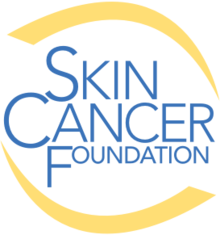
A melanocytic nevus is usually a noncancerous condition of pigment-producing skin cells. It is a type of melanocytic tumor that contains nevus cells. Some sources equate the term mole with "melanocytic nevus", but there are also sources that equate the term mole with any nevus form.

Skin cancers are cancers that arise from the skin. They are due to the development of abnormal cells that have the ability to invade or spread to other parts of the body. There are three main types of skin cancers: basal-cell skin cancer (BCC), squamous-cell skin cancer (SCC) and melanoma. The first two, along with a number of less common skin cancers, are known as nonmelanoma skin cancer (NMSC). Basal-cell cancer grows slowly and can damage the tissue around it but is unlikely to spread to distant areas or result in death. It often appears as a painless raised area of skin that may be shiny with small blood vessels running over it or may present as a raised area with an ulcer. Squamous-cell skin cancer is more likely to spread. It usually presents as a hard lump with a scaly top but may also form an ulcer. Melanomas are the most aggressive. Signs include a mole that has changed in size, shape, color, has irregular edges, has more than one color, is itchy or bleeds.
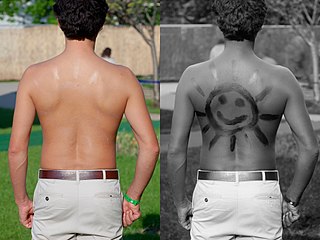
Sunscreen, also known as sunblock or sun cream, is a photoprotective topical product for the skin that helps protect against sunburn and most importantly prevent skin cancer. Sunscreens come as lotions, sprays, gels, foams, sticks, powders and other topical products. Sunscreens are common supplements to clothing, particularly sunglasses, sunhats and special sun protective clothing, and other forms of photoprotection.

Sun tanning or tanning is the process whereby skin color is darkened or tanned. It is most often a result of exposure to ultraviolet (UV) radiation from sunlight or from artificial sources, such as a tanning lamp found in indoor tanning beds. People who deliberately tan their skin by exposure to the sun engage in a passive recreational activity of sun bathing. Some people use chemical products which can produce a tanning effect without exposure to ultraviolet radiation, known as sunless tanning.

Indoor tanning involves using a device that emits ultraviolet radiation to produce a cosmetic tan. Typically found in tanning salons, gyms, spas, hotels, and sporting facilities, and less often in private residences, the most common device is a horizontal tanning bed, also known as a sunbed or solarium. Vertical devices are known as tanning booths or stand-up sunbeds.
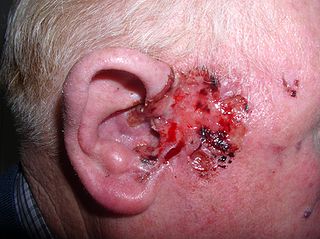
Basal-cell carcinoma (BCC), also known as basal-cell cancer, basalioma or rodent ulcer, is the most common type of skin cancer. It often appears as a painless raised area of skin, which may be shiny with small blood vessels running over it. It may also present as a raised area with ulceration. Basal-cell cancer grows slowly and can damage the tissue around it, but it is unlikely to spread to distant areas or result in death.

Melanoma, also redundantly known as malignant melanoma, is a type of cancer that develops from the pigment-producing cells known as melanocytes. Melanomas typically occur in the skin, but may rarely occur in the mouth, intestines, or eye. In women, they most commonly occur on the legs, while in men, they most commonly occur on the back. About 25% of melanomas develop from moles. Changes in a mole that can indicate melanoma include an increase in size, irregular edges, change in color, itchiness, or skin breakdown.

Slip-Slop-Slap is a mnemonic slogan for reducing unhealthy sun exposure by slipping on a shirt or rash guard, slopping on sunblock, and slapping on a sun hat. It was prominent in Australia and New Zealand during the 1980s, originating as the jingle in a televised public service announcement in which an anthropomorphic mascot named Sid the Seagull would sing and dance to the phrase.

A dysplastic nevus or atypical mole is a nevus (mole) whose appearance is different from that of common moles. In 1992, the NIH recommended that the term "dysplastic nevus" be avoided in favor of the term "atypical mole". An atypical mole may also be referred to as an atypical melanocytic nevus, atypical nevus, B-K mole, Clark's nevus, dysplastic melanocytic nevus, or nevus with architectural disorder.

Indoor tanning lotions accelerate the tanning process, by promoting the production of melanin. Increasing blood flow to the skin is a proposed mechanism, which may in turn stimulate production of melanin by melanocytes. Historically, indoor tanning lotions have contained no sunscreen and offer no protection from the sun. However, many tanning lotions currently contain sunscreen. Unlike sunless tanning lotions, these are designed for use with an ultraviolet source such as a tanning bed or booth.

Frederic Edward Mohs was an American physician and general surgeon who developed the Mohs micrographic surgery (MMS) technique in 1938 to remove skin cancer lesions while still a medical student at the University of Wisconsin–Madison. The Mohs procedure is considered the best method for treating certain types of skin cancer, because it has very high cure rates for even high-risk lesions, combined with maximal preservation of healthy tissues.

Tanning dependence or tanorexia is a syndrome where an individual appears to have a physical or psychological dependence on sunbathing or the use of ultraviolet (UV) tanning beds to darken the complexion of the skin. Compulsive tanning may satisfy the definition of a behavioral addiction as well.
Albert Bernard Ackerman, M.D. was an American dermatologist and pathologist who was "a founding figure in the field of dermatopathology."

Sunburn is a form of radiation burn that affects living tissue, such as skin, that results from an overexposure to ultraviolet (UV) radiation, usually from the Sun. Common symptoms in humans and other animals include red or reddish skin that is hot to the touch or painful, general fatigue, and mild dizziness. Other symptoms include blistering, peeling skin, swelling, itching, and nausea. Excessive UV radiation is the leading cause of (primarily) non-malignant skin tumors, which in extreme cases can be life-threatening. Sunburn is an inflammatory response in the tissue triggered by direct DNA damage by UV radiation. When the cells' DNA is overly damaged by UV radiation, type I cell-death is triggered and the tissue is replaced.
Thomas B. Fitzpatrick was an American dermatologist. He was Chairman of the Department of Dermatology at Harvard Medical School and Chief of the Massachusetts General Hospital Dermatology Service from 1959 to 1987. He has been described as "the father of modern academic dermatology" and as "the most influential dermatologist of the last 100 years", in part because he trained so many of the leaders in the field.

Skin cancer in Australia kills over 2,000 each year, with more than 750,000 diagnosed and treated. Tanning became embedded in Australian culture and proved to be a controversial issue because of its popularity among teens and solarium users, despite correlations between tanning and an increased risk of developing melanoma. Australia experienced relative success through skin cancer prevention campaigns started in the 1980s and continued to invest and promote awareness through government-funded mass media strategies. Although Australia has one of the highest national rates of skin cancer, mortality trends in melanoma stabilized.
The Public Access to Sunscreens Coalition, or PASS Coalition, is a coalition of public health organizations, dermatologists and sunscreen product companies whose mission is to help prevent skin cancer and improve public health by ensuring Americans have access to safe and effective sunscreens and evidence-based education on sun-safe practices. It accomplishes these goals by lobbying for an efficient and transparent regulatory pathway to market for new sunscreens and advocating against proposals that limit access to FDA-approved sunscreens.
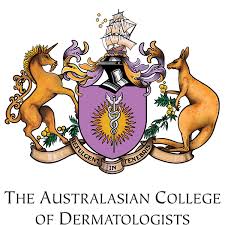
The Australasian College of Dermatologists (ACD) is an accredited specialist medical college comprising medical practitioners with specialist training in dermatology.
June K. Robinson is an American dermatologist, academic and researcher. She is a Research Professor of Dermatology at Northwestern University’s Feinberg School of Medicine.
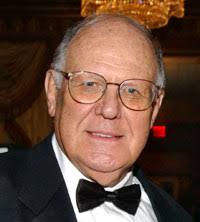
Perry Robins is Professor Emeritus of Dermatology at New York University, dermatologist, physician, Mohs surgeon, and author. Robins founded the Skin Cancer Foundation, the Journal of Drugs in Dermatology, Journal of Dermatologic Surgery & Oncology, International Society for Dermatologic Surgery, and trained in and taught the Mohs micrographic surgery (MMS) technique.
